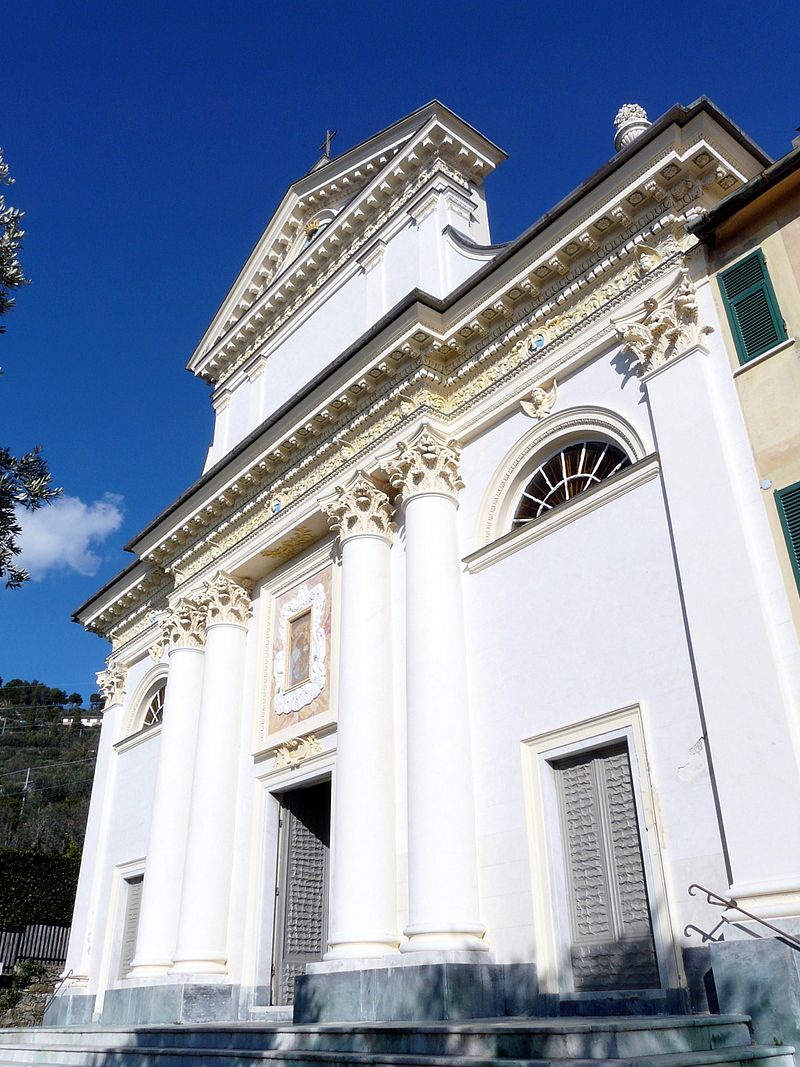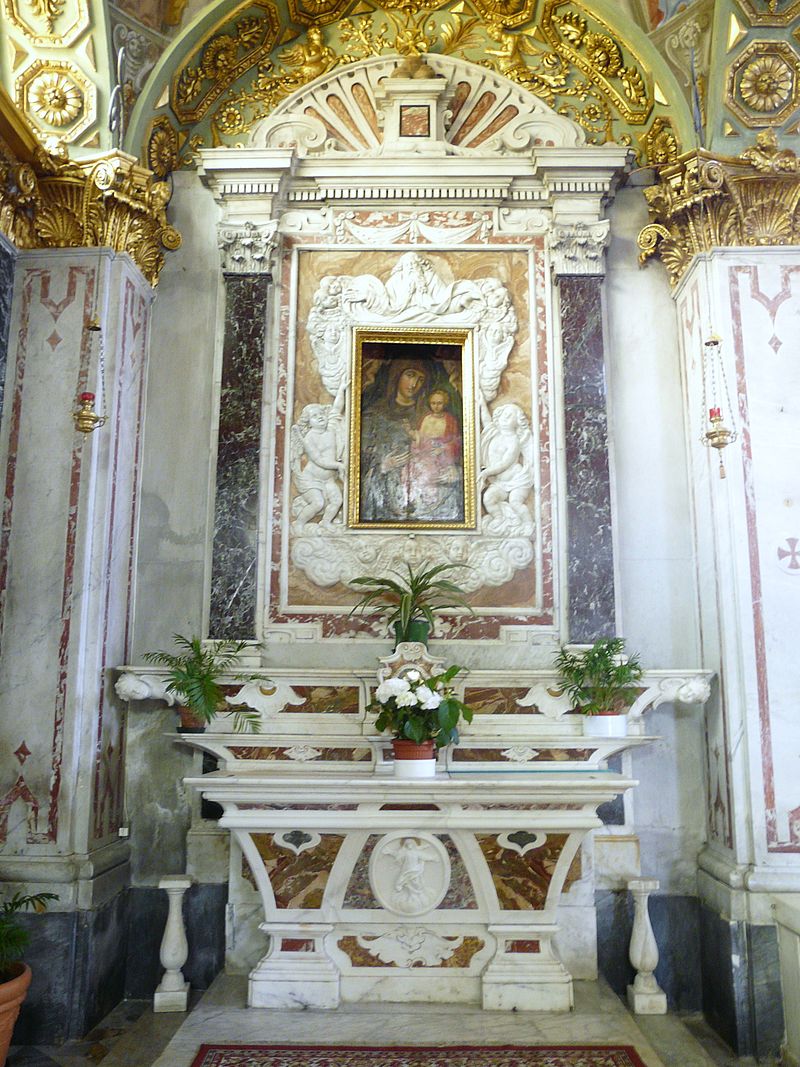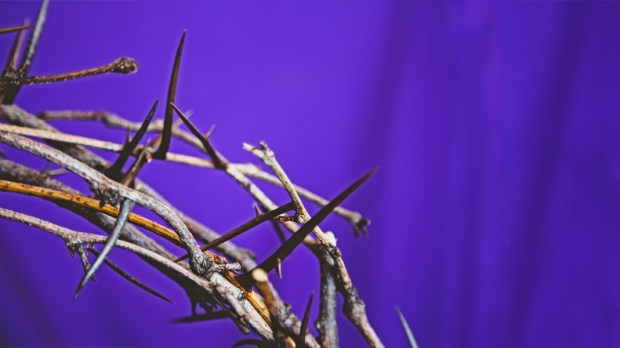At the church of Our Lady of Graces, in Recco, a coastal town in mountainous northern Italy, there is a highly venerated reliquary. The thorn it contains is thought to be from Jesus’ crown of thorns.

The thorn is 1.8 inches long
The thorn is said to have been brought to Recco by Fabiano and Giulio Ageno, ship captains returning from the Crusades. It was then placed in a reliquary on an altar in the church. The thorn measures about 1.8 inches long, and is very thin.
The feast of the Holy Thorn is celebrated on Easter Monday. However, the reliquary is put on public display on other specific occasions as well (www.culturainliguria.it).
The miracles of the sailors
The Shrine also has a small image, painted and gilded on wood, which depicts the Virgin holding the Child in her arms and, in one hand, a pomegranate, a Christian symbol of the Passion of Christ. According to local legend, a ship owner bought the image in a city in Flanders, moved by a mysterious presentiment. During the return trip, his ship was stopped inexplicably right in front of the ridge on which the chapel of the Virgin stands. The prodigious event made the sailors give the statue as a gift to the church, and once they had done so, the ship was able to continue its voyage without problems.
The church houses a collection of approximately twenty “ex votos” — images left in tribute by people who have received blesses and graces through the intercession of the Virgin depicted there — from the 18th century, placed there by sailors (Secolo XIX, October 1).

The “map” of the Holy Thorns
Going back to the topic of the thorns from Jesus’ crown on the cross, there are many places in Italy that claim to have one, although it’s difficult to determine the authenticity of the great majority of them.
Here are some places that hold objects that are highly venerated: Pisa (at Our Lady of the Thorn), Rome (at the church of Holy Cross in Jerusalem), Palermo (church of Carmine Maggiore), Cremona (the cathedral, which has a thorn given by Pope Gregory XIV, who had been the city’s bishop for thirty years), Pizzighettone (given by King Francis I of France), Padua (three thorns kept at the Basilica of St. Anthony), Vicenza (church of the Holy Crown), Cagliari (given to the Cathedral of Saint Mary by Clement VII), Ravenna (at the museum of the archbishopric, which is the cathedral museum) where two thorns are kept inside a cross, Polesine (parish church of Costa di Rovigo), and Voghera (at the cathedral).
In addition to the above locations, which are relatively well known, tradition also says that there are thorns at the cathedral of Sezze (Latina), the church of St. George at Montechiaro d’Acqui (Alessandria), the church of Lumi di Sant’Elpidio in Mare, the church of St. Augustine in Fermo, the church of St. Mary Major in Vasto, the church of St. Barnabas in Milan (three thorns given by St. Charles Borromeo), the church of Saint Mary of the Assumption in Sabbioneta (Mantua Province), the convent of the Holy Thorn in Petilia Policastro (Crotone), the church of Saint Mary of the Assumption in Colle di Quarrata, the Basilica of St. Nicholas of Bari, the church of St. Gaetano in Barletta, the cathedral of Andria, the Museum of Silver at the Basilica Cathedral of Ariano Irpino, the parish of St. Mary of the Mountain in Cassano Magnago, the parish of St. Mary in the Countryside in Torre Pallavicina, in Meleti (since 1682; originally the thorn was at the church of St. Barnabas in Milan), Montefusco in Avellino, in Cusano Mutri in Benevento, at the shrine in Petilia Policastro, in Giffoni Valle Piana in Salerno, in Saint Catherine—a small mountain town in Vincenza, in Vanzone at San Carlo, at the Shrine of the Blessed Virgin of the Rosary of Pompeii, at the church of St. Peter Martyr in Ascoli Piceno, and at Noto in Sicily, where it has been carried in a procession every Good Friday since 1295.

